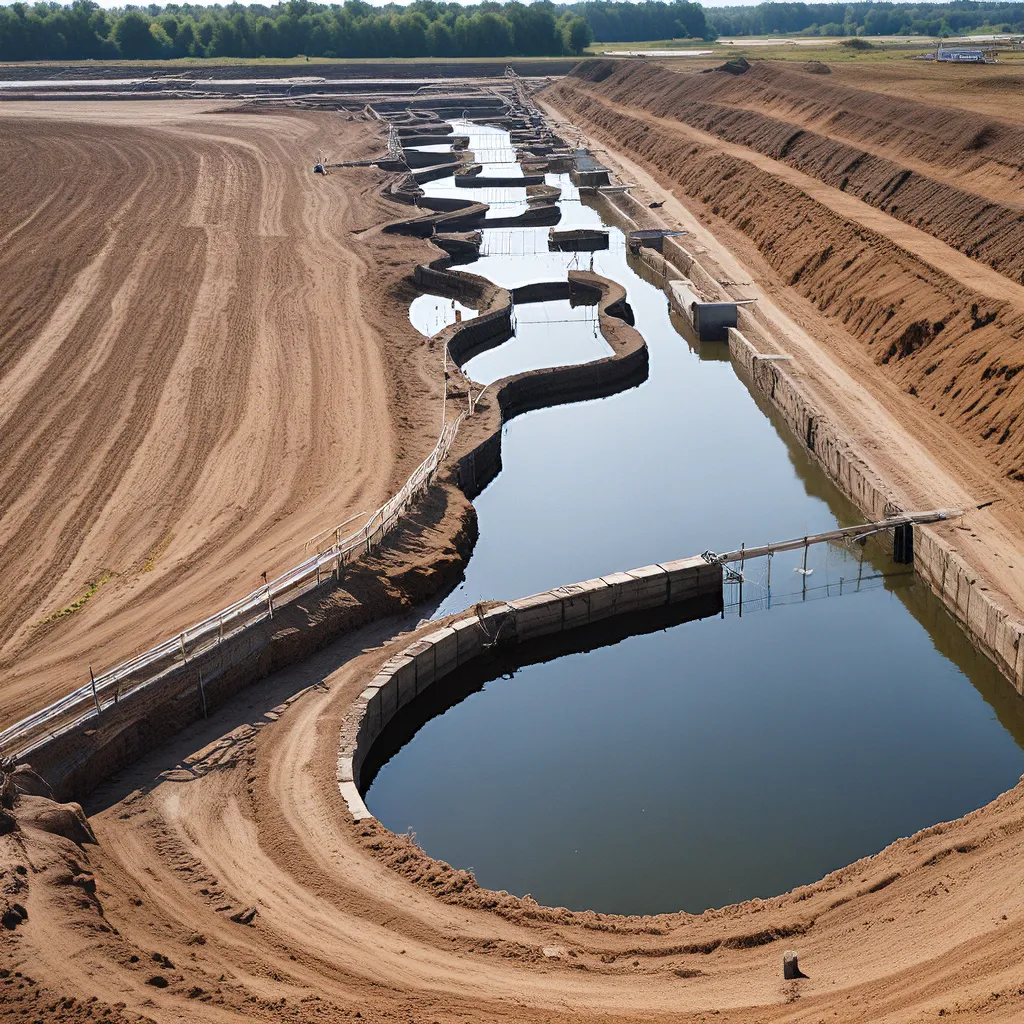
As someone who’s always been fascinated by the unsung heroes of our infrastructure, I’ve got to admit – private wastewater systems are a bit of a hidden gem. Sure, they may not be as glamorous as skyscrapers or high-speed rail, but they’re the quiet workhorses that keep our homes and communities running smoothly. And when it comes to navigating the web of regulations and standards, let me tell you, it’s a whole different ballgame.
Wading Through the Regulatory Waters
So, where do we even begin? Well, in the world of private wastewater systems, the responsibility is often split between state and local authorities. In Iowa, for example, the Iowa DNR (Department of Natural Resources) sets the minimum standards for onsite wastewater treatment systems, while the local boards of health are tasked with enforcing those standards and overseeing the day-to-day operations.
Now, I know what you’re thinking – that’s a lot of bureaucratic red tape to untangle. But here’s the thing: it’s all done with the greater good in mind. These regulations are in place to ensure that our groundwater, our rivers, and our lakes stay clean and healthy. After all, we wouldn’t want our septic systems to be the ones causing the next environmental disaster, would we?
Diving into the Details
Let’s take a closer look at some of the key regulations and requirements that private wastewater system owners need to navigate. First and foremost, there are strict siting and construction guidelines that dictate where your system can be located and how it must be built. We’re talking things like minimum depth to groundwater, minimum separation distances from water sources, and maximum percolation rates for the soil.
But it doesn’t stop there. Once your system is up and running, you’ve got to make sure it’s continuously meeting secondary treatment standards. That means regular monitoring and reporting to ensure the treated wastewater is up to snuff before it’s released back into the environment. And if you happen to have a system that discharges directly into a designated water source or drainage tile, well, you’re going to need an NPDES General Permit 4 to keep the regulators happy.
Now, I know what you’re thinking – that’s a lot of hoops to jump through. But the way I see it, it’s all about striking that delicate balance between environmental protection and the practical needs of homeowners and businesses. And let me tell you, the folks at the Iowa DNR are working hard to make it as painless as possible.
Getting Support and Training
In fact, the Iowa DNR has partnered with Des Moines Area Community College (DMACC) to create the Onsite Wastewater Training Center of Iowa, which offers comprehensive training on all things septic and onsite wastewater systems. This is a game-changer for county sanitarians, installers, pumpers, and designers – heck, it’s even open to the general public.
And if that’s not enough, the Iowa Onsite Wastewater Association (IOWWA) is another great resource, providing training opportunities and a wealth of information on private septic systems in the state. These guys are the real MVPs, helping to bridge the gap between regulatory compliance and practical, real-world implementation.
Funding Options for System Upgrades
But let’s not forget about the financial side of things. Upgrading or replacing an inadequate onsite sewer system can be a costly endeavor, but thankfully, there are some funding options available. The State Revolving Fund (OSWAP Loan Program) and the USDA Rural Development program both offer loans to individuals looking to give their septic systems a much-needed facelift.
So, whether you’re a seasoned pro or just dipping your toes into the world of private wastewater systems, it’s clear that navigating the regulatory landscape can be a bit of a challenge. But with the right resources, the right support, and a healthy dose of perseverance, I’m confident that you can come out on top. After all, a well-functioning septic system is the unsung hero of our homes and communities, and it’s worth the effort to keep it running like a well-oiled machine.
Staying Ahead of the Curve
Of course, the regulatory landscape is always evolving, and that’s why it’s important to stay up-to-date on the latest developments. The Iowa DNR is currently in the process of revising the Chapter 69 Onsite Wastewater Treatment and Disposal rules as part of the Executive Order 10 (EO10) review. They’re accepting public comments on the proposed changes until June 7, 2024, so if you’ve got a stake in the game, now’s the time to make your voice heard.
And who knows what the future holds? Ongoing research and active debates surrounding private wastewater systems suggest that the field is ripe for innovation and evolution. Maybe we’ll see the rise of new, more efficient treatment technologies or a shift in the way regulators approach the challenge of environmental protection. Whatever happens, you can bet that the team at Alpha Wastewater will be there to help navigate the changing tides.
So, there you have it – a deep dive into the world of regulatory compliance in private wastewater systems. It may not be the flashiest topic, but it’s one that’s vital to the health and well-being of our communities. And with the right information, the right resources, and a little bit of perseverance, I’m confident that you can make sense of it all and keep your septic system running like a dream.